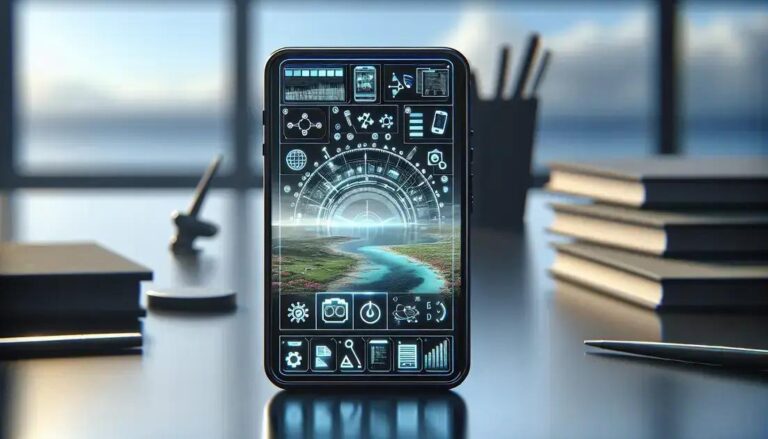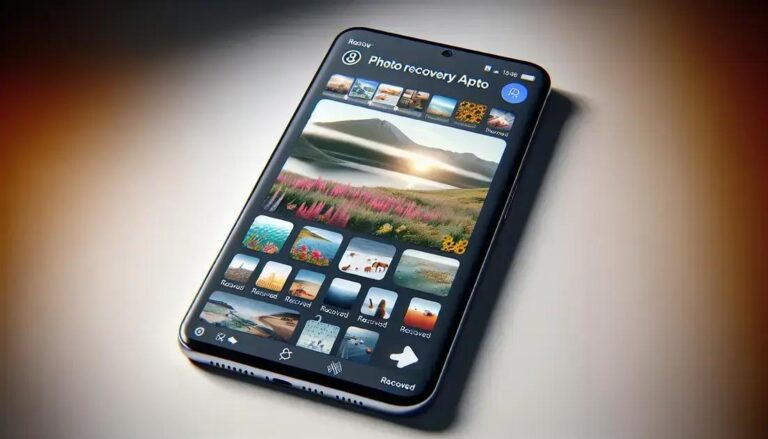Recover Permanently Deleted Photos: recover your lost gallery
That sinking feeling hits hard when you realize recover permanently deleted photos might be your only solution.
Learn which professional software tools actually work instead of wasting time on programs that promise everything.
Get access to detailed step-by-step methods that bring back precious memories you thought were lost forever.
Understanding Photo Deletion on iOS Devices
When you delete photos from your iPhone, they don’t disappear immediately from your device’s storage system completely.
Apple’s iOS creates a safety buffer called the Recently Deleted album where removed images stay for thirty days before permanent removal.
This built-in protection gives you multiple chances to restore accidentally deleted photos before they become truly lost forever.
How iOS Handles Photo Deletion
Your iPhone marks deleted photos as available space rather than immediately destroying the actual image data stored on memory.
The system overwrites this marked space only when new photos or apps need storage room on your device’s internal memory.
This process means recover permanently deleted photos remains possible until new data replaces the original image files completely.
Quick Recovery from Recently Deleted Album
The Recently Deleted folder serves as your first line of defense against accidental photo loss on any iOS device.
Open your Photos app and scroll down to find the Recently Deleted album at the bottom of your album list.
Tap Select in the top right corner, choose your photos, then hit Recover to restore them to your main gallery.
Time Limits for Recently Deleted Recovery
Photos remain in the Recently Deleted album for exactly thirty days before iOS removes them permanently from your device.
The system displays a countdown timer showing how many days remain before each photo gets deleted forever from storage.
Acting quickly maximizes your chances to recover permanently deleted photos using this simple built-in recovery method effectively.
Using iCloud Backup for Photo Recovery
iCloud backup creates automatic copies of your photos, providing another path to recover lost images from your collection.
Access your iCloud photos through the Photos app by enabling iCloud Photo Library in your device settings menu.
This cloud storage solution keeps your images safe even when local device storage fails or gets corrupted unexpectedly.
Accessing iCloud Photo Library
Navigate to Settings, tap your Apple ID at the top, then select iCloud to access your cloud storage options.
Enable Photos under the iCloud services list to sync your photo library across all connected Apple devices automatically.
Your deleted photos may still exist in iCloud even after removal from your iPhone’s local storage system.
Restoring from iCloud Backup
Complete device restoration from iCloud backup brings back photos that existed during the last successful backup creation.
Go to Settings, General, Reset, then choose Erase All Content and Settings to prepare for backup restoration.
Select Restore from iCloud Backup during setup to recover permanently deleted photos from your most recent backup file.
Third-Party Recovery Software Solutions
Professional photo recovery software offers advanced methods to retrieve deleted images when standard options fail completely.
These specialized tools scan your device’s memory for traces of deleted photo data that iOS hasn’t overwritten yet.
Popular options include Dr.Fone, 3uTools, and Tenorshare UltData, each offering unique features for image recovery processes.
Choosing the Right Recovery Tool
Research different software options to find tools that support your specific iPhone model and iOS version compatibility.
Read user reviews and check success rates before downloading any third-party recovery software to your computer system.
Free trials often allow you to scan for recoverable photos before purchasing the full version of recovery software.
Recovery Software Features
Advanced recovery tools offer multiple scan modes to recover permanently deleted photos from various storage locations effectively.
These programs can retrieve images from iTunes backups, iCloud backups, and direct device memory scanning simultaneously.
Some software includes preview functions that let you see recoverable photos before starting the actual restoration process.
Key features to look for include:
- Deep scan technology for thorough memory analysis
- Preview capabilities before recovery completion
- Multiple file format support including HEIC and JPEG
- Selective recovery options for specific photos
- Backup creation during recovery process
iTunes and Finder Backup Recovery Methods
Computer-based backups through iTunes or Finder provide another avenue to recover deleted photos from your iPhone device.
These local backups often contain photo data that might not exist in iCloud or on your current device anymore.
Accessing these backup files requires connecting your iPhone to the computer used for creating the original backup.
Locating iTunes Backup Files
iTunes stores backup files in specific folders on your Mac or Windows computer’s hard drive system.
Navigate to the iTunes backup folder location and look for files with dates matching when your photos still existed.
Third-party tools can extract photo data from these backup files to recover permanently deleted photos without full device restoration.
Extracting Photos from Backups
Backup extraction tools read iTunes backup files and allow selective recovery of specific data types including photos.
Programs like iMazing, 3uTools, or Dr.Fone can browse backup contents and extract photos without affecting current device data.
This method preserves your current photos while adding back the deleted images from your backup files successfully.
Prevention Strategies for Future Photo Loss
Implementing smart backup strategies prevents future photo loss situations that require complex recovery procedures later.
Multiple backup methods create redundancy that protects your precious memories against various types of data loss scenarios.
Regular maintenance of your photo library ensures you always have recent backups available when problems occur unexpectedly.
Automatic Backup Configuration
Enable automatic iCloud Photos backup to create continuous copies of new photos as you take them daily.
Set up regular iTunes or Finder backups on your computer to maintain local copies independent of cloud storage.
Consider using additional cloud services like Google Photos or Dropbox for extra protection against data loss events.
Photo Organization Best Practices
Create albums to organize important photos separately from casual snapshots that might get deleted accidentally during cleanup.
Export precious photos to external storage devices like USB drives or external hard drives for permanent offline storage.
Regular photo library maintenance helps you identify and protect important images before they get lost in large collections.
Essential backup practices include:
- Weekly computer backups through iTunes or Finder
- Continuous iCloud Photos synchronization enabled
- Monthly external storage device exports
- Album organization for important photo categories
Troubleshooting Common Recovery Issues
Recovery attempts sometimes fail due to technical issues that require specific troubleshooting approaches to resolve successfully.
Understanding common problems helps you identify solutions quickly and avoid wasting time with ineffective recovery methods.
Many recovery failures result from user errors rather than actual data loss, making proper troubleshooting essential for success.
Software Compatibility Problems
Ensure recovery software supports your iPhone model and current iOS version before attempting any recovery procedures.
Outdated recovery tools might not work with newer iOS versions, requiring software updates or alternative solutions.
Check system requirements carefully to avoid compatibility issues that prevent successful photo recovery from your device.
Connection and Recognition Issues
Recovery software needs proper iPhone recognition to access device memory and scan for deleted photo data effectively.
Try different USB cables, computer ports, and connection methods if your recovery software cannot detect your iPhone.
Trust computer prompts on your iPhone and ensure the latest iTunes version is installed for proper device communication.
Common troubleshooting steps include:
- Restart both iPhone and computer before recovery attempts
- Use original Apple USB cables for reliable connections
- Update recovery software to latest available versions
- Disable antivirus temporarily during recovery process
- Try different USB ports or computer systems
Advanced Recovery Techniques for Severe Cases
Severe data loss situations require advanced recovery techniques that go beyond standard software solutions available to consumers.
Professional data recovery services use specialized equipment to recover permanently deleted photos from damaged or corrupted storage systems.
These services handle cases where normal recovery methods fail due to hardware damage or extensive data overwriting.
Professional Recovery Services
Data recovery specialists possess clean room facilities and advanced tools for recovering data from damaged iPhone storage chips.
These services can often retrieve photos even from devices with water damage, physical damage, or corrupted memory systems.
Professional recovery typically costs more but offers higher success rates for severely damaged devices requiring specialized handling.
When to Consider Professional Help
Physical damage to your iPhone requires professional assessment to determine if photo recovery remains possible through specialized techniques.
Repeated failed recovery attempts might cause additional data loss, making professional intervention necessary for successful results.
Consider professional services when photos have extreme sentimental or business value that justifies the additional cost involved.
Conclusion
Photo recovery success depends on acting quickly and choosing appropriate methods for your specific data loss situation.
Multiple recovery options exist to recover permanently deleted photos, from simple built-in features to advanced professional services.
Prevention through regular backups remains the most effective strategy for protecting your precious photo memories long-term.
Frequently Asked Questions
Can I recover photos deleted more than 30 days ago?
Yes, using iCloud backups, iTunes backups, or third-party recovery software might retrieve photos deleted beyond the 30-day limit.
Do recovery apps actually work for permanently deleted photos?
Recovery apps can work if the photo data hasn’t been overwritten by new files, but success rates vary by situation and timing.
Will factory reset prevent photo recovery completely?
Factory reset makes recovery much harder but not impossible if you have previous backups or use professional recovery services.
How much does professional photo recovery cost?
Professional recovery services typically cost $300-$1500 depending on damage severity and data recovery complexity required for success.
Can I recover photos from a broken iPhone screen?
Broken screens don’t prevent photo recovery if the device still functions and connects to computers for backup access.






